Top 5 Sources of Fluoride (It’s Not Your Toothpaste)
What are the top sources of fluoride? In this post, I list the top 5 sources. It isn't toothpaste or drinking water.
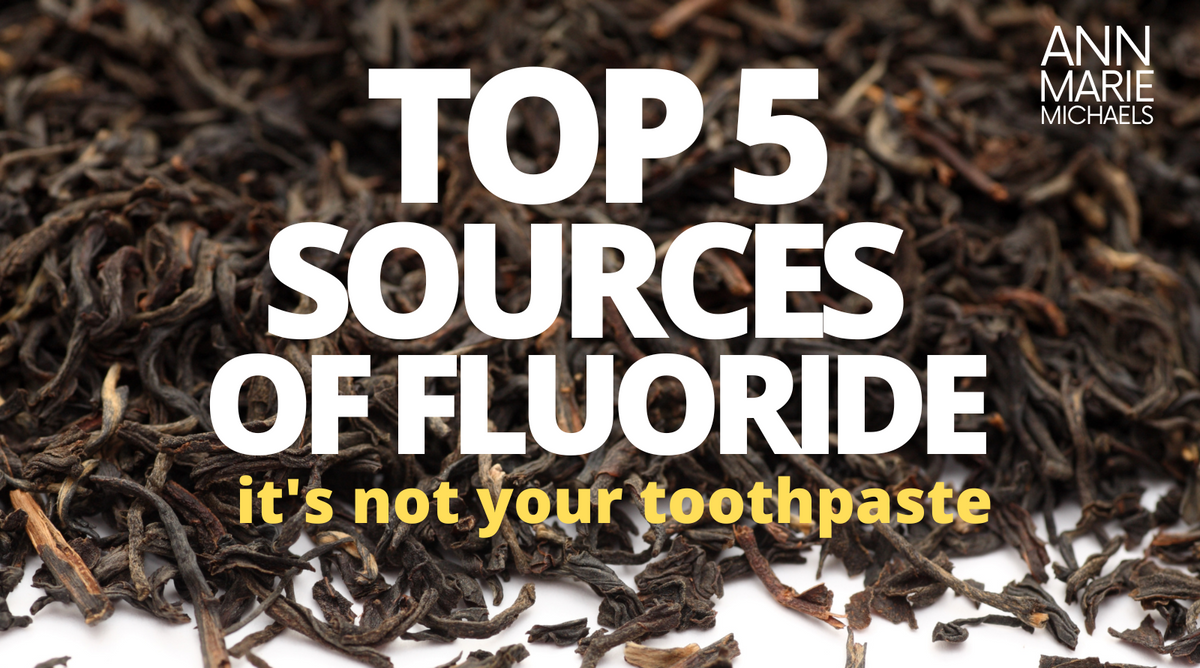
What are the top sources of fluoride? I was surprised to find out…
If you’re trying to avoid fluoride, you’ll be surprised to learn the hidden places fluoride is lurking.
In this post, I list the top 5 sources of fluoride. And it’s not toothpaste or drinking water.
Why Should We Avoid Fluoride?
Fluoride is harmful to human health. Recent studies show that fluoride may not prevent cavities and that in fact, fluoride causes many health problems, from bone loss to breast cancer to hormonal problems including hypothyroidism and ovarian cysts.
Read this post about our former nanny, Jennifer, and how we cured her health problems by removing fluoride from her diet (her story is at the bottom — the section called Jennifer’s Story).
She wasn’t helped at all by going gluten-free and dairy-free… but just by getting the fluoride out, she was able to cure her chronic migraine headaches, seizures, ovarian cysts, and acne.
How do we avoid the biggest sources of fluoride? I did a lot of research on this and found that the biggest sources of fluoride are not drinking water and toothpaste.
Read on to find out where the vast majority of fluoride that you are consuming is coming from.
Top 5 Sources of Fluoride: Watch the Video
If you’re more of visual learner, this video has the same information as this post. In this Facebook livestream video, I walk you through the top 5 sources of fluoride.
Update: This video is not accessible at this time because my channel was deleted by YouTube in December 2022. Hopefully it will be reinstated when this oppressive censorship is finally stopped and we get our freedom of speech back.
Top 5 Sources of Fluoride
#1 Source of Fluoride: Tea and Kombucha
Many of us have switched from coffee to green tea and switched from soda to kombucha in an effort to be healthy. But unfortunately, tea and kombucha are very high in fluoride. According to the USDA National Fluoride Database of Selected Beverages and Foods, tea has 5-10 times more fluoride than a can of soda.
This includes any kind of tea in the camellia sinensis family: black tea, oolong, white, or green tea. It doesn’t matter if the tea is organic or not, and fermenting tea into kombucha has no impact on the fluoride.
Recent Study Shows Tea is High in Fluoride
According to a recent study from the Medical College of Georgia, tea probably has much higher levels of fluoride than we thought:
“Most published reports show 1 to 5 milligrams of fluoride per liter of black tea, but a new study shows that number could be as high as 9 milligrams.” (Source: 2010 study from the Medical College of Georgia.)
Most published studies about black tea traditionally have used a method of measuring fluoride that doesn’t account for the amount that combines with aluminum to form insoluble aluminum fluoride, which is not detected by the fluoride electrode.
Whitford compared that method with a diffusion method, which breaks the aluminum-fluoride bond so that all fluoride in the tea samples can be extracted and measured.
He tested seven brands of store-bought black tea, steeping each for five minutes in deionized water, which contains no fluoride.
The amount of fluoride in each sample was 1.4 to 3.3 times higher using the diffusion method than the traditional method.
9 milligrams per liter is anywhere from 1.5 to 13 times the fluoride in fluoridated water.
In other words, you would have to drink over 3 quarts of fluoridated water to get the same amount of fluoride as you get in one 8-ounce glass of iced tea.
How To Avoid Fluoride From Tea and Kombucha
This is one of the easiest ways to reduce fluoride in your diet. Just stop drinking tea and kombucha, or limit how much you drink.
A cup every once in a while won’t hurt you but this is not something you want to drink on any kind of regular basis. Herbal tea, like chamomile or mint, is fine.
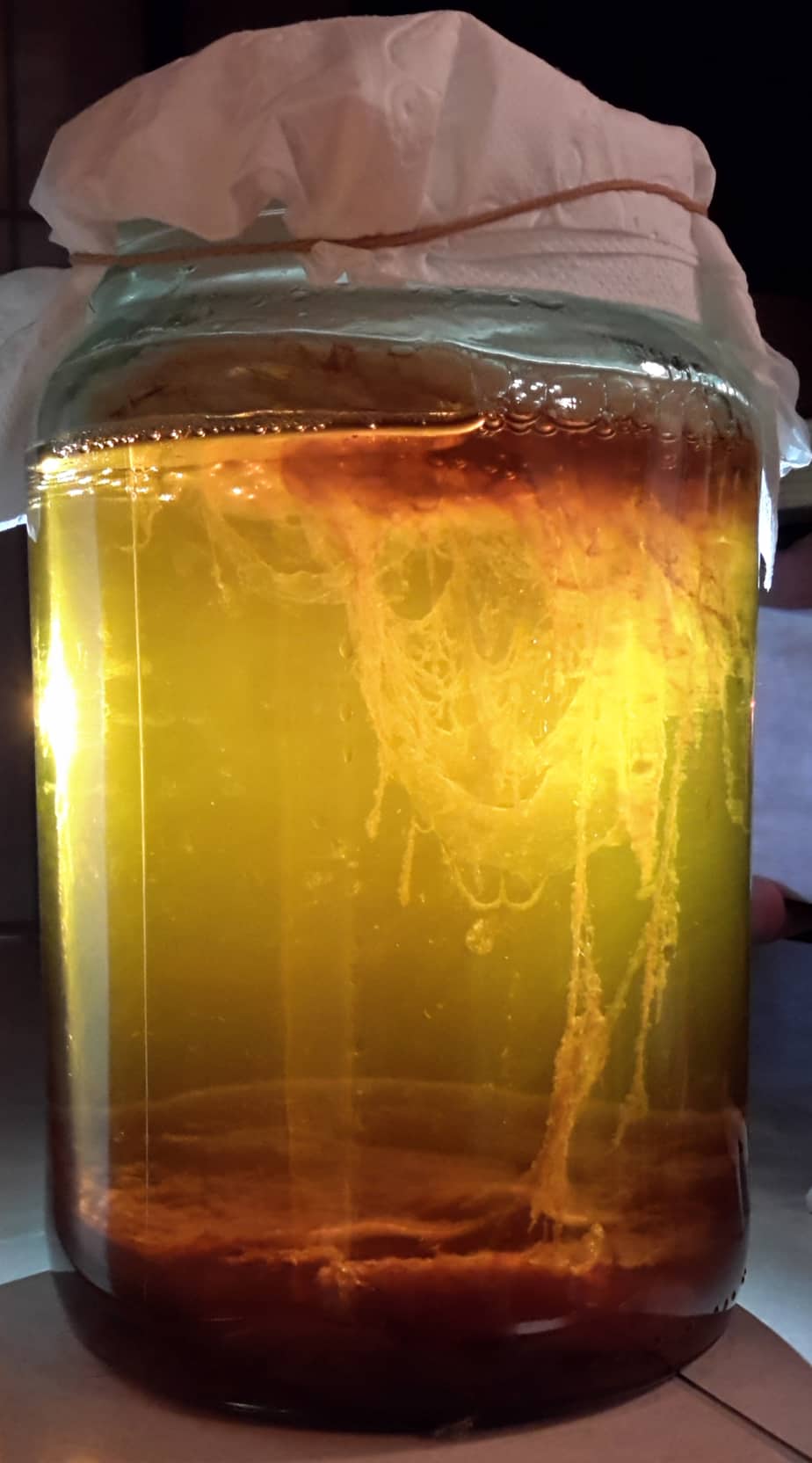
#2 Source of Fluoride: Teflon & Aluminum Cookware and Bakeware
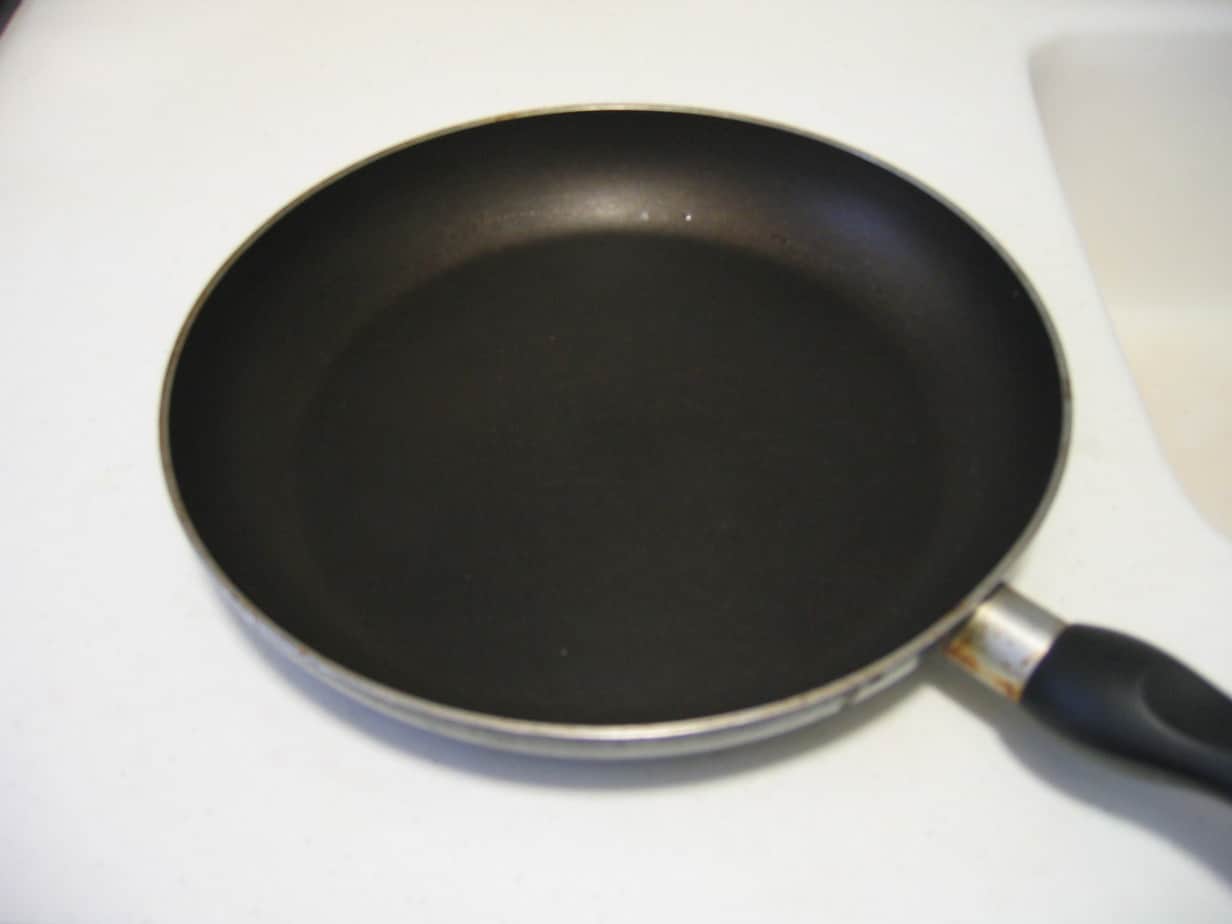
Teflon, or non-stick, or aluminum pots and pans increase the fluoride in your food. According to a study from 1975 published in the Journal of Dental Research, cooking with teflon increased the fluoride in the food by 3 times.
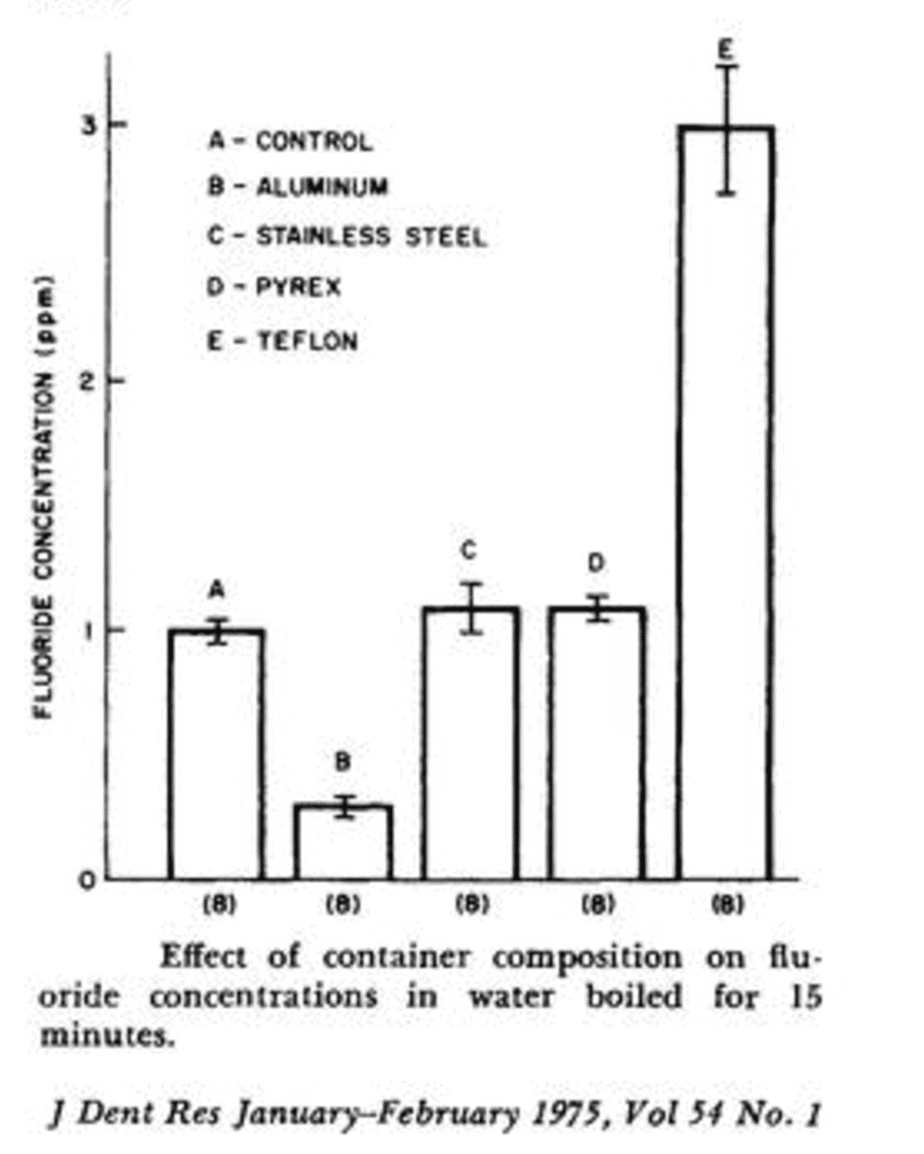
It’s interesting in the chart that the fluoride appears to be reduced in water boiled in the aluminum pan… but I wonder if that’s caused by the fluoride bonding with the aluminum and becoming undetectable, as we saw in tea in the the 2010 study from the Medical College of Georgia (see above).
How To Avoid Fluoride From Teflon and Aluminum
Ditch the Teflon and aluminum cookware as soon as possible. Switch to cast iron, enameled cast iron, stainless steel, or glass.
Read my post: Ditch the Teflon: The Ultimate Guide to Safe Cookware.
#3 Source of Fluoride: Non-organic Fruits, Vegetables, Juices and Wine
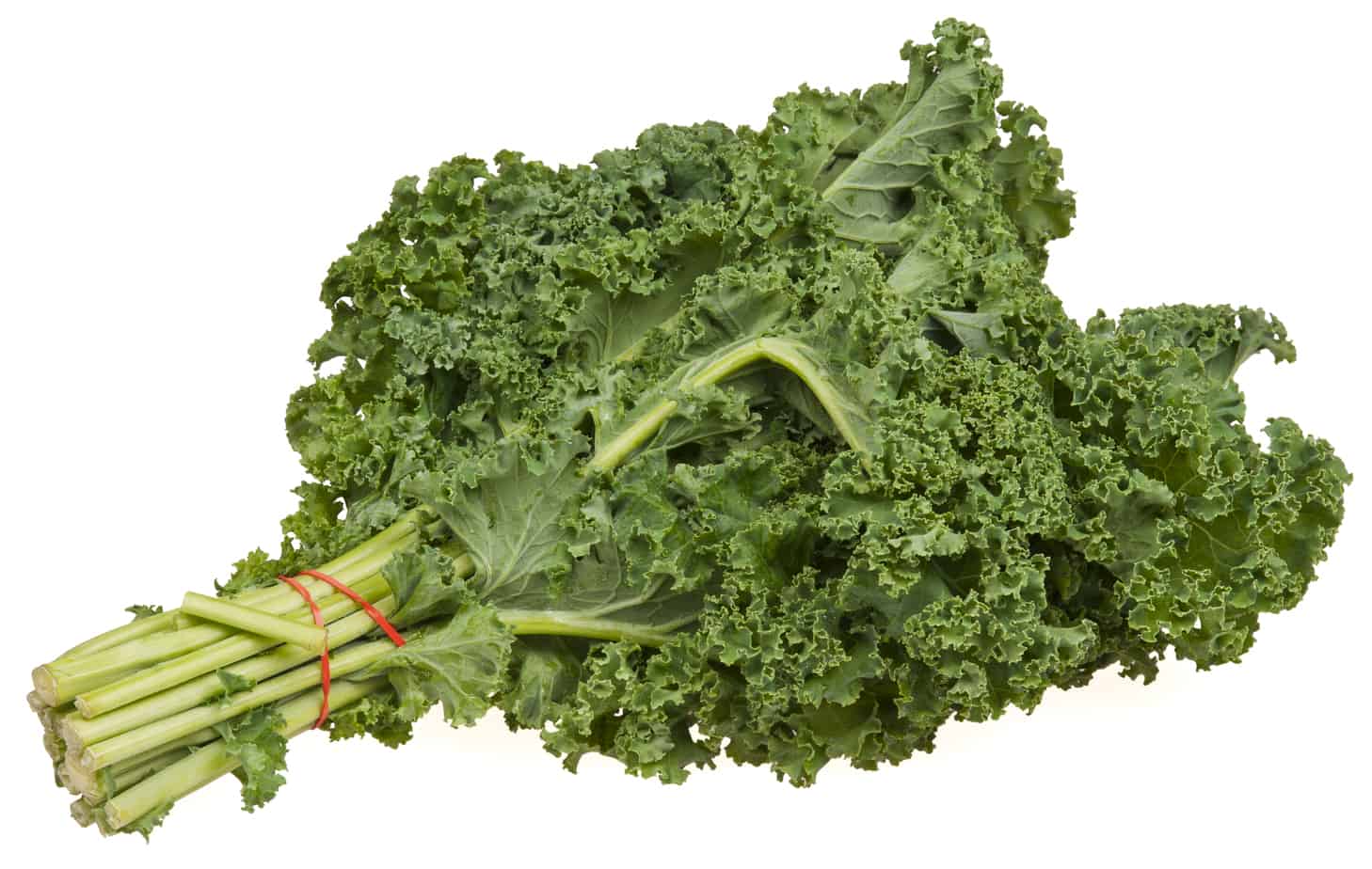
Fruits and vegetables, if they are not organic, are one of the biggest sources of fluoride in our diet. It’s ironic because when we try to eat healthier and start eating more salads and drinking more fruit juice, and we end up getting a lot more fluoride as a result.
The reason for this is fruits and vegetables that are grown conventionally (not organic) are sprayed with fluoride-based pesticides.
According to the Fluoride Action Network:
“In 2004, the US Department of Agriculture published the National Fluoride Database of Selected Beverages and Foods – but this was before the US gave the green light for sulfuryl fluoride as a food fumigant and approved extremely high levels of fluoride on food.
FAN has not been able to locate any US EPA-approved laboratory that will test foods for their fluoride content. In fact, the director of one laboratory told us,“It’s easier to test hazardous waste for fluoride than it is to test fluoride levels in corn flakes.”
Which Non-organic Fruits, Vegetables, Juices and Wine Contain the Most Fluoride?
Cryolite is the main fluoride-based pesticide that is used on fruits and vegetables. According to the Environmental Protection Agency, cryolite is predominantly used on grapes, potatoes and citrus fruit (orange, grapefruit, lemon, lime, tangelo, tangerine).
In addition, according to FAN, cryolite is also used on apricot, broccoli, Brussels sprouts, cabbage, cauliflower, collards, eggplant, kale, kiwifruit, kohlrabi, lettuce, melon, nectarine, peach, pepper, plum, pumpkin, squash (summer & winter), tomato, and a number of berries.
So, yeah, that’s kind of like almost everything, isn’t it?
Wine that is made with grapes that are not organic is very high in fluoride. This is why your best bet is to use this to buy organic wine. Most imported wines are also not going to be high in fluoride.
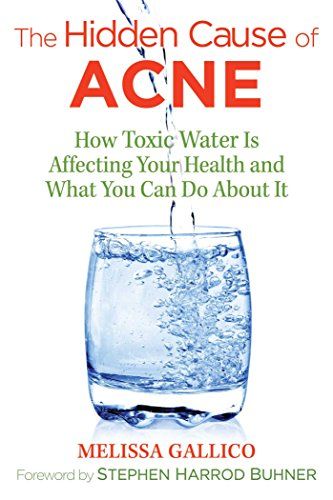
Melissa Gardner, who wrote the book, The Hidden Cause of Acne: How Toxic Water Is Affecting Your Health and What You Can Do about It.
I highly recommend this book – read my review here.
In the book, she explains that she would get acne breakouts whenever she was exposed to fluoride. Melissa said that she could safely drink wine most European wine with no problems. And she said that she could drink most wine from the United States except for wine made with grapes from the Fresno/ San Joaquin/Central Valley region of California.
How To Avoid Fluoride From Fruits, Vegetables and Wine
- Buy only organic fruits and vegetables.
- Buy wine that is organic, made with organic grapes, or imported.
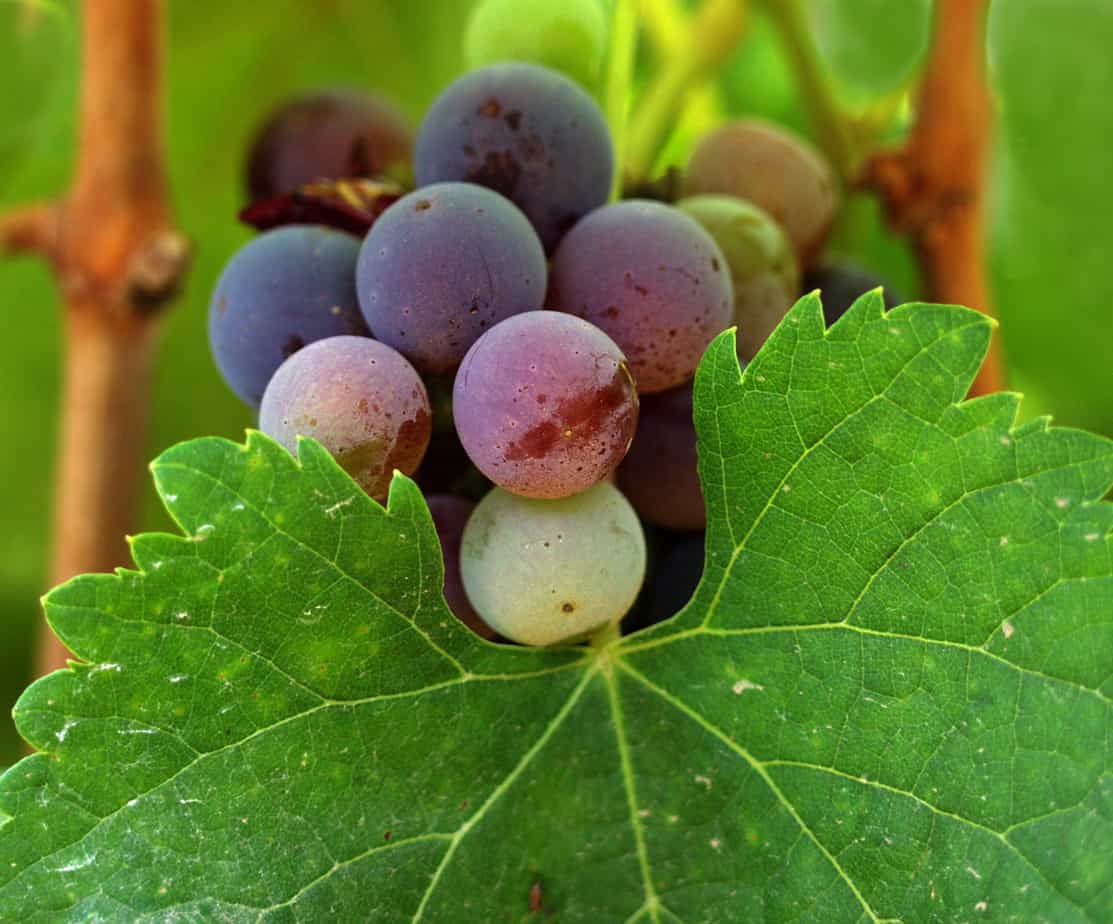
#4 Source of Fluoride: Non-organic Meat and Bone Broth, Canned Seafood and Processed Foods
Fluoride is stored in the bones of animals, so animal bones contain the highest amounts of fluoride.
Animals that are fed conventional (non-organic) feed are eating a lot of grains (mostly soy and corn) that are sprayed heavily with fluoride-based pesticides.
Mechanically deboned or mechanically separated meats like chicken nuggets and bologna and Slim Jims are made from a slurry of meat and other animal byproducts. Bones, skin and cartilage are included in the slurry when they process the meat. Those bones are very high in fluoride.
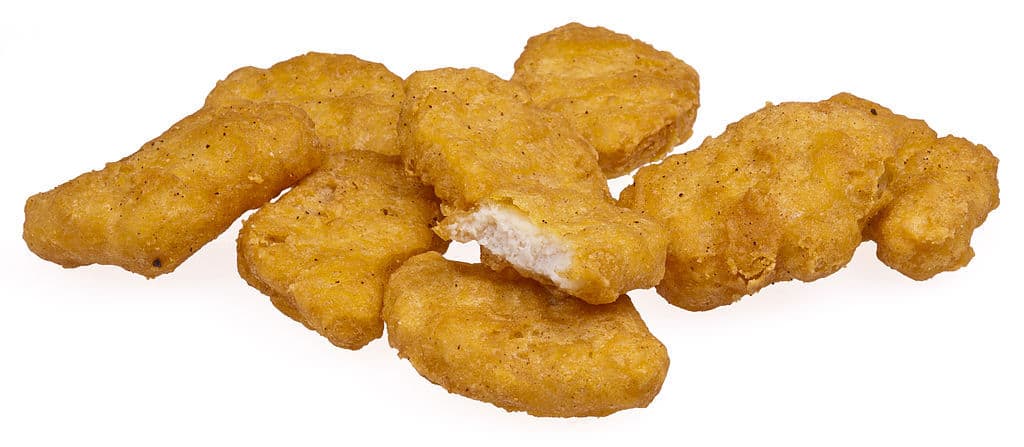
Non-organic meat that is sold and cooked on the bone is also higher in fluoride. This also includes bone broth and soups and stews if they are made from the bones of animals that were fed conventional feed.
In the book, The Hidden Cause of Acne, Melissa Gardner said one of the biggest acne breakouts she had was after she went to a Chinese restaurant and ordered wonton soup. It was in an area of the country that was not fluoridated, so she couldn’t figure out why she reacted to the soup.
She called them and found out that they made the soup with broth made from simmering bones. The bones they were using were not organic and so they were high in fluoride.
Seafood is also high in fluoride, but most especially canned fish that includes the bones, like anchovies and sardines. But see, I don’t worry as much about seafood because (1) it’s high in iodine and (2) you’re not likely to eat 16 ounces of seafood (but you can easily drink that much tea every day).
Also, any processed food is going to be higher in fluoride. The more processed the food is, the more fluoride it contains because the fluoride becomes more concentrated due to the processing. Cereal contains anywhere from 2-10 mg per kg of fluoride, which is extremely high.
How To Avoid Fluoride from Non-organic Meat and Bone Broth, Canned Seafood and Processed Foods
Limit the following foods:
- Processed meats like chicken nuggets, hot dogs, and bologna unless they are organic.
- Soups and bone broth unless it is made from the bones of animals that were raised organically.
- Canned seafood that includes bones like sardines and anchovies.
- Processed foods like cereal, chips and crackers, pastries, etc.
#5 Source of Fluoride: Water That You Cook With and In the Foods You Eat
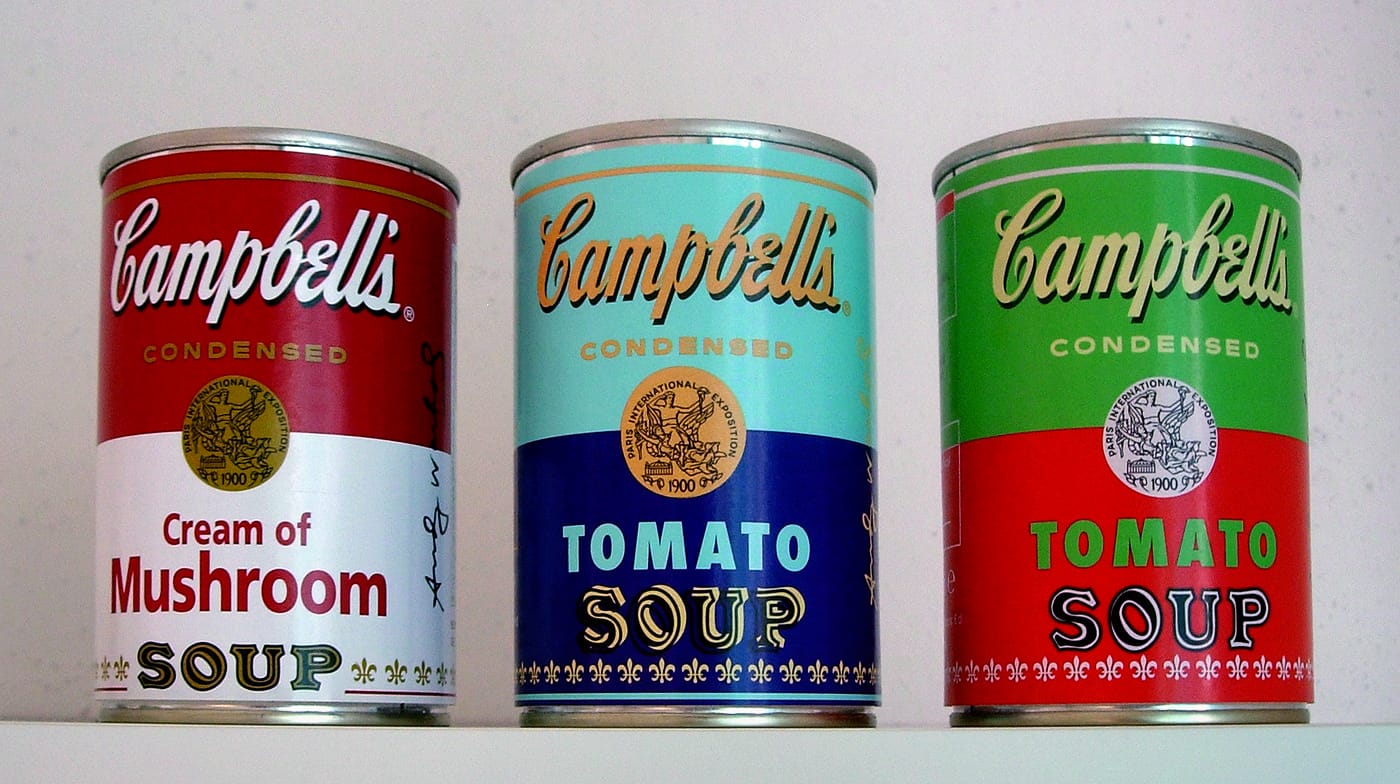
When people think about fluoride, they think of the fluoride in their tap water or the bottled water they are drinking. But that pales in comparison to the fluoride you get from fluoride-based pesticides and tea.
That said, fluoride in the water that is used to make your food is still part of the mix of fluoride you consume every day. And it’s not just an issue whether the water in your city is fluoridated.
This is because you are eating processed and prepared food made with fluoridated water. Everything from canned beans to bread to salsa to soup may (and most likely does) contain fluoridated water. It doesn’t matter if it’s organic either.
This is the main reason you need to cook from scratch as much as possible, using water that is filtered for fluoride.
Also, if you have well water, that doesn’t mean you don’t need to filter the fluoride out. You need to get your water tested for fluoride because many parts of the country have naturally occurring fluoride in the ground and naturally occurring fluoride has the same negative health impacts as added fluoride.
How To Avoid Fluoride from the Water You Drink and Cook With
- Cook From Scratch As Much As Possible – Use dried beans instead of canned, make your own soups and salsa, etc.
- Buy a Fluoride Filter (see below)
Water Filters That Remove Fluoride
Not all water filters remove fluoride. Brita or other pitcher-style filters, for example, will not remove fluoride.
See my post: Best Fluoride Filters That Filter Fluoride from Your Water
Other Sources of Fluoride
There are many other sources of fluoride, including pharmaceutical drugs including fluorinated anesthetics, Cipro, Niflumic acid, Flecainide, and Voriconazole (Source), cigarettes, toothpaste and fluoride treatments, and soft drinks and beer.
However, as I said above, a soda contains 5-10 times less fluoride than iced tea or kombucha. So you’re better off going with a Coke if you have to choose (yes, I really mean that). If you want to drink beer, I’d go with beer imported from Germany or Holland (the only countries that fluoridate their water in Europe are England, Ireland, Spain and Serbia).
Babies and Children and Fluoride
Children and babies are especially vulnerable to fluoride because their upper limit of fluoride is much lower than adults.
Baby formula is very high in fluoride. Formula-fed infants receive 50–100 times more fluoride than exclusively breast-fed infants. (Source)
Breast milk contains no fluoride. Milk from cows, sheep and goats also contains no fluoride. Is this nature’s way of protecting babies from fluoride?
Also, in my mind, this is the main reason juice boxes are so bad for kids. It’s not the sugar — it’s the fluoride.
If you’re going to give kids juice boxes, it needs to be organic. Or just give them milk. And don’t give them kombucha or tea or hot dogs or chicken nuggets.
Pin This Post: Top 5 Sources of Fluoride (It’s Not Your Toothpaste)
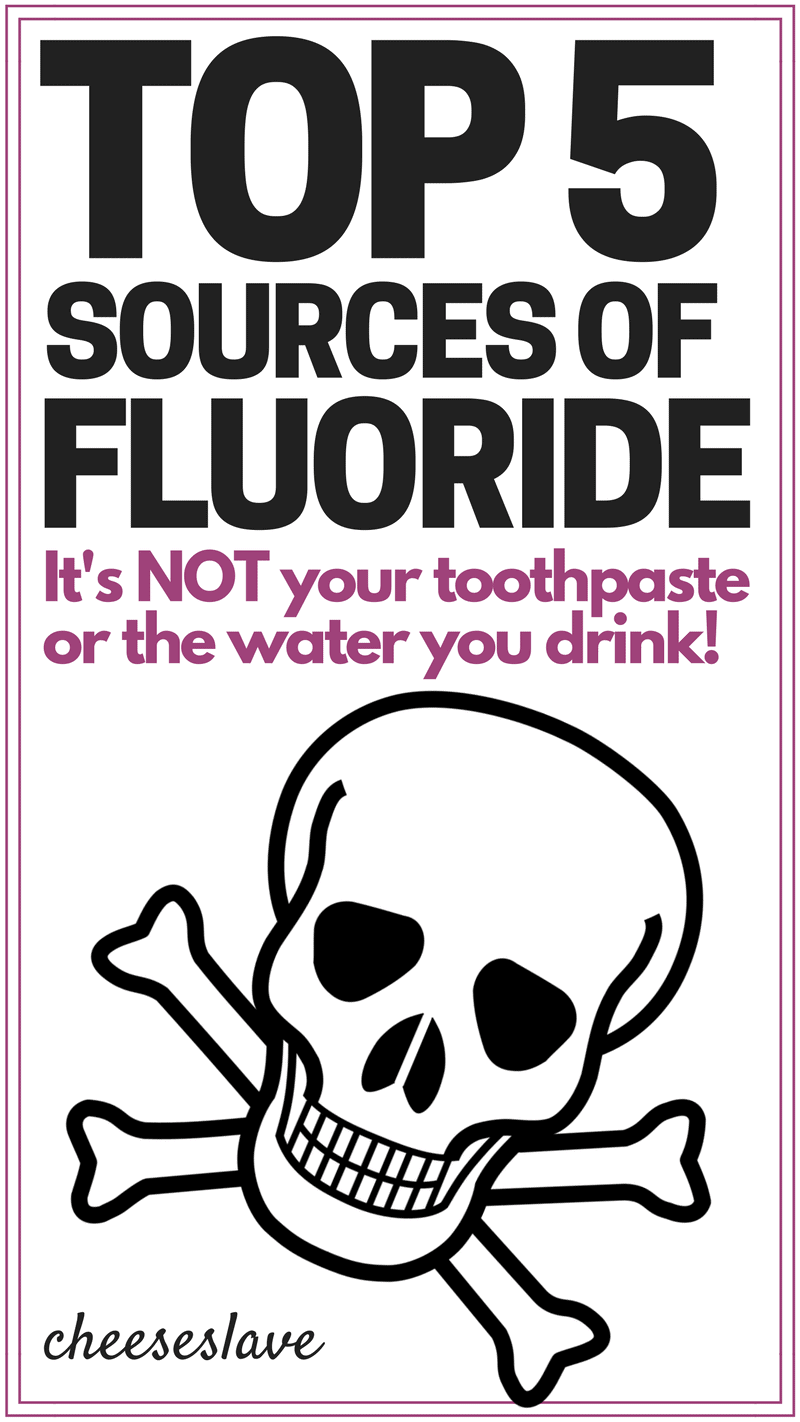
Questions About Sources of Fluoride?
Please comment below with questions and ideas and input.
Photo credits: Iced Tea Juice Boxes January 17, 201011
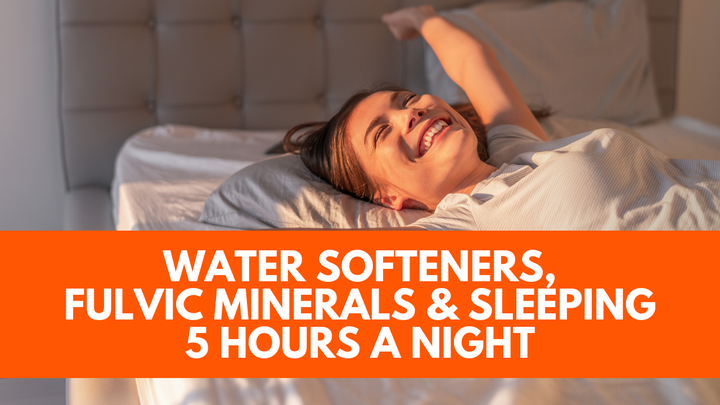
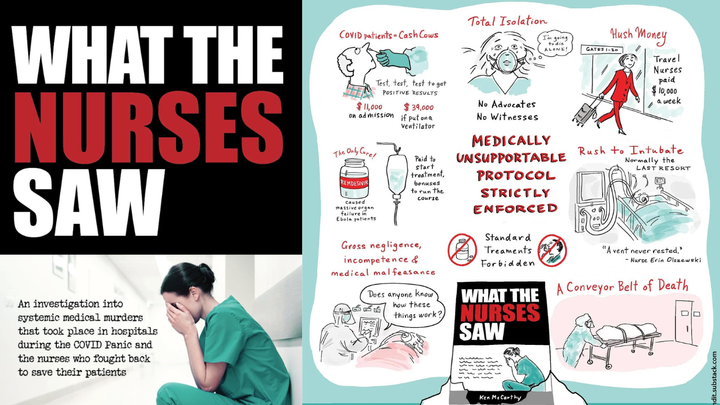
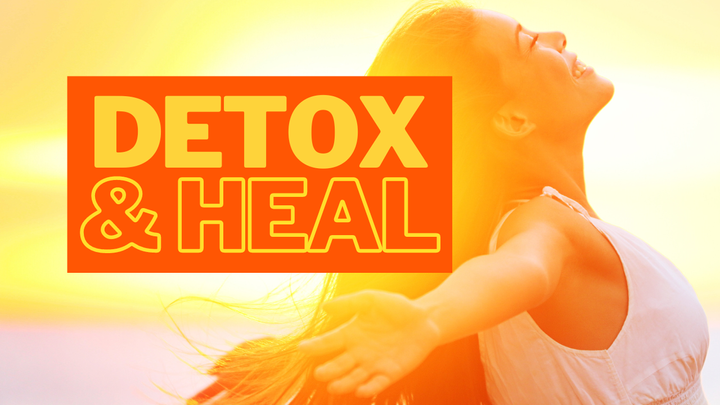
Comments ()